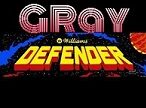Retro Game Dev Volume 2 Walkthrough for C64
On February 2nd, 2021, Derek Morris released his second book RetroGamedev Volume 2. This is his follow-up to volume one which has inspired many people to get back into coding for the Commodore 64. One such person was Marcelo Cabral who has created Retaliate DX, an exciting upcoming RGCD release, in part thanks to this book.
Volume 2 is a literal continuation of Volume 1 and assumes the reader has learned ALL the concepts presented in Volume 1 and is ready to “Level Up” to learn new concepts and ideas. Some of the fundamentals that are required before reading volume 2 are; Number bases and uses, C64 basic hardware, fundamental 6502 assembly language, and how to run prg files in an emulator or on real hardware. It also assumes the reader is willing to take up the challenge to independently learn new software tools that are required for this journey.
Derek provides a free download of all the source code and assets presented in the book over on his forum at retrogamedev.com.
In Volume 2, Derek makes the development environment switch from CBM Program Studio to Kick Assembler, which is covered in a good bit of detail in chapter one. After having the development environment properly configured, you will then be ready to follow along with the book and the example concepts presented therein. Derek recommends you familiarize yourself with the library code reference chapter 14. Here Derek carefully details the majority of his macro libraries, even including the corresponding page numbers in the Mapping the C64 book.
Read examples page 110
….
Setting up the Kick Assembly environment can be tricky so if you do find yourself needing a little more assistance with that, I have previously worked on a video outlining the process which can be of some assistance.
In Chapter 2 Derek provides a quick explanation of the 6502 registers and explains what macros and subroutines are used for. He then describes the differences between labels, constants, and variables. With the included source code download, we are able to follow along chapter by chapter. We are encouraged to make tweaks to the code in order to make sure we are comprehending the content.
Video Example…
In Chapter 3 we are introduced to the concept of debugging and profiling. Profiling is a term used to describe how long a section of code takes to execute. This can be accomplished by changing the border color before and after program execution.
Video Example…
Chapter 4 covers the concept of the program interrupt or IRQ (interrupt request), the default interrupt the wedge interrupt and multiple raster IRQs. This is where the concepts start to get a bit more complicated and may require additional studying. At the tail end of the chapter, he discusses sprite multiplexing. Sprite multiplexing is a way of programmatically allowing for more than the maximum number of hardware sprites to be displayed on the screen. In his program example, he simultaneously displays 56 animated sprites on the screen at the same time.
Video Example…
Chapter 5 begins the second half of Volume 2. Here Derek begins a fairly detailed dissection of his Beach Bar game building upon all of the concepts previously covered. I will demonstrate:
Youtube Description:
This is my walk-through of the Retro Game Dev Volume 2 Book by Derek Morris.
Did you miss my walkthrough of the first book?
https://youtu.be/gPqtClqhOwo
Need help setting up Kick Dev Environment?
https://youtu.be/rdu-pW9pLsk
Download the assets:
https://www.retrogamedev.com
Amazon Purchase link:
https://www.amazon.com/RetroGameDev-C64-2-Derek-Morris/dp/0578850664
C64 Retaliate DX Coming Soon:
https://www.rgcd.co.uk/2021/04/coming-soon-retaliate-dx-endless-forms.html
#c64 #derekmorris #retrogamedev



